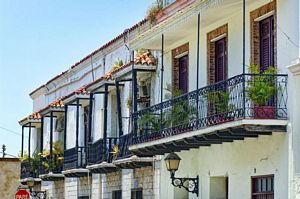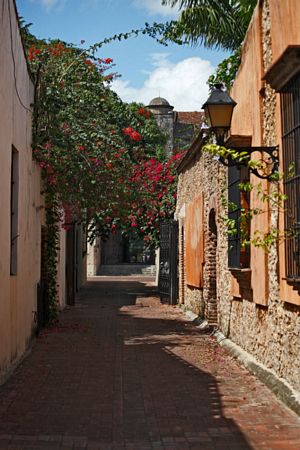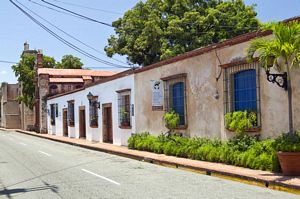
- Get to Know
- About Dominican Republic
- What to see
- What to do
- Hotels
- Santo Domingo
- Boca Chica
- South coast
- Bani
- Azua de Compostela
- Barahona
- Pedernales
- Inland Region
- Santiago de los caballeros
- Jarabacoa
- Concepción de la Vega
- Constanza
- San Francisco de Macorís
- North Coast
- MonteCristi
- Puerto Plata
- S. F. de Puerto Plata
- Sosúa
- Cabarete
- Nagua
More Offers on:Touristic Information:- Dominican Republic
- Santo Domingo
- San Pedro de Macorís
- Juan Dolio
- La Romana
- Higüey
- Punta Cana
- Playa Bávaro
- Samaná
- Hato Mayor
- Bani
- Azua
- San Cristóbal
- Barahona
- Pedernales
- Bahoruco
- San Juan de la Maguana
- Independencia
- Montecristi
- Puerto Plata
- Sosúa
- Cabarete
- Río San Juan
- Nagua
- Santiago
- Jarabacoa
- La Vega
- Constanza
- Cotuí
- Bonao
Basic Information:- Prepare your travel
- How to get
- Means of Transport
- Gastronomy
- What to See
- Beaches
- Museums
- Natural Parks
- Zoos & Aquariums
- What to do
Others:Zona Colonial, Santo Domingo
Stroll around the first European Colonial district in the New World and admire its historical buildings.
Founded by Bartolomé Columbus in 1496, the city of Santo Domingo was almost completely built during the 16th century.
Firstly located on the east bank of the Ozama River, it was the first city built by the spaniards during the American continent. Despite this, in 1502 it was moved to the west side of the river by the command of Nicolás de Ovando, governor of La Española at the time, thus founding the new city of Santo Domingo de Guzmán. Some time later, in 1507, the city obtained the Royal Statute of being the first European city located in the New World.
In 1990, the UNESCO declared it World Heritage Site, appraising it as one of the most beautiful old towns in the Caribbean.
Going through the gorgeous streets of the Colonial area, you’ll discover buildings from the early years of the 1500s, such as the Alcázar de Colón Fortress, the Primada Cathedral or the Ozama Fortress, among many others.
The main streets composing its valued heritage are El Conde, Las Damas and Las Mercedes.
An interesting tour around the area can be done by entering the city via The Count’s Gate that access to a pedestrian street with the same name located in front of the Independence Park and which passes through the area until reaching the Ozama river. Along its bank there are located a large number of Colonial buildings that were witnesses of the resurgence of the city and how it was progressively expanded inwards. Needless to say, you can only visit these remarkable constructions prior payment of the corresponding ticket.
This initial route, finishing in Spain Square, will allow you to discover the main points of interest of Ciudad Colonial: places such as the Columbus Park, the Ozama Fortress, the Cathedral, the National Pantheon or the Alcázar de Colón (Columbus Alcazar).
The gate of “El Conde” especially stands out, as it was built during the second half of the 17th century, in what was known as the old San Genaro Bastion. At the entrance you will be able to read “Dulce et decorum est pro Patria mori” (It is sweet and glorious to die for one’s country). On this very same door the independence of Cuba was declared in 1844. Moreover, it is one of the main spots from where you can take a bus to go to the south of the island, since numerous buses, taxis and public cars stop there.
The second door protecting the Colonial area is known as Puerta de la Misericordia Gate or Great Gate, located in Palo Hincado Street. It dates from the end of the 16th century or beginning of the 17th, and it is part of the 16th century walls that used to protect the city.
Its name comes from a small 1842 chapel erected after the tremors that took place on the area at the time, being the spot where people used to go to pray for mercy and the end of the damages on their lands and houses.
As well as El Conde, this gate was also the site of the proclamation of the country’s independence.
El Conde is not only one of the traditional streets in the island, but also the only pedestrian street in Santo Domingo. Its name was inherited from the Count of Peñalva, who in 1655 prevented British ships from invading the city.
It is curious to know that, in old times, when citizens used to walk by this street they always wore their best clothes; while nowadays, it has numerous shops, from jewelleries and clothing shops to souvenirs shops and grocery stores. Moreover, you’ll be able to enjoy cafes, ice-cream shops, or even stalls located on both sides of the street.
Don’t miss the chance to go for a walk by the oldest cobblestone streets of this nice island, enjoying its buildings and shops.
More information:
Location:
Santo Domingo, Dominican Republic.
Recommended Excursions:
Carte Interactive:
Santo Domingo
What to see:
- Essential places to visit in Colonial City:
- Zona Colonial
- Cathedral of Santo Domingo
- Parque Colón
- Palacio Consistorial
- Fortaleza Ozama Fortress
- Plaza España Square
- Alcázar de Colón
- Museum of the Royal Houses
- Dominicos Convent
- Ruins of San Nicolás de Bari Hospital
- ChuChu Colonial
- Colonial Houses
- Sun Clock
- Places to visit in Colonial City (See for superior stays to 3 days):
- National Pantheon
- Casa de Bastidas
- Casa de Hernán Cortés
- Casa de los Dávila
- Borgellá Palace
- Casa del Cordón House
- Casa de la Moneda House
- Church of Santa Clara Convent
- Imperial Convent of Santo Domingo
- Iglesia Las Mercedes Church
- Church of the Regina Angelorum Convent
- Tostado House Museum
- Duarte House Museum,
- Fuerte San José Fortress
- Fuerte San Gil Fortress
- Padre Billini Square
- Puerta San Diego Gate
- Puerta del Conde Gate
- Puerta de la Misericordia Gate
- Other places in Colonial City:
- Iglesia Nuestra Señora de la Altagracia Church
- Ruins of the San Francisco Church and Monastery
- Iglesia de Santa Bárbara Church
- Iglesia Nuestra Señora del Carmen Church
- Los Remedios Chapel
- Casa de Teatro
- Museo Infantil Trampolín Museum
- Amber World Museum
- Fuerte Concepción Fort
- Parque Duarte Park
- Essential places to visit in Santo Domingo:
- Columbus Lighthouse
- Los Tres Ojos
- Parque Mirador Sur
- National Aquarium
- Botanic Garden
- Malecón
- Fray Antonio de Montesinos Monument
- Homeland Altar
- Places to visit in Santo Domingo (See for superior stays to 3 days):
- Palacio de Bellas Artes
- Obelisk
- Obelisco Hembra
- Boca Chica Beach
- Guayacanes Beach
- Museum of the Dominican Man
- Museo de Arte Moderno
- National Zoo Park
- Other places in Santo Domingo:
- Chinatown
- Church and Hospital of San Lázaro
- Museo Nacional de Historia Natural
Hotels
Book now your Hotel or Apartment:
Flight Offers:
Compare flight offers and book in advance to save some money.
Car Rental
Find the largest offer in car rental for your holidays:
Copyright www.VisitDominicanRepublic.org © - All rights reserved.





